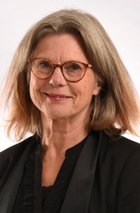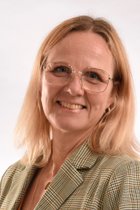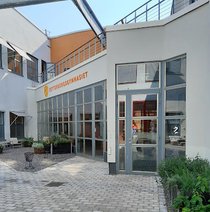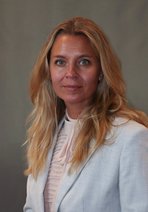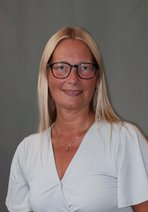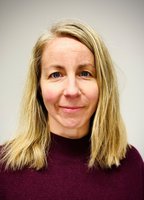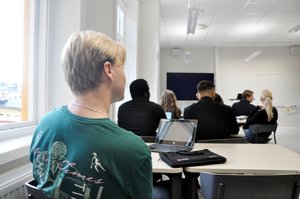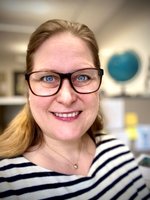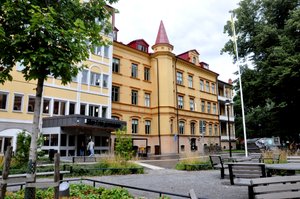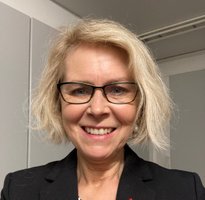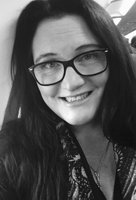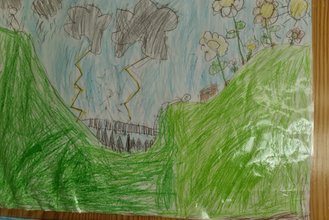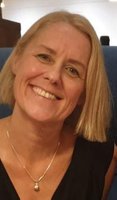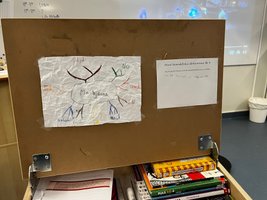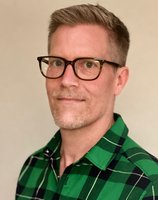NOIIE Symposium 2023
A group of eleven educators; principals and teachers from four swedish schools participated in the NOIIE* yearly symposium in Vancouver in may 2023.
This page contents the stories of these four schools,
as well as contact information to the educators and network-members.
Our Stories
Leading a growing network of educators
Since 2018 we´ve been working together to spread the research and the framework of Spiral of inquiry in our Swedish context. In 2020-21 we were asked by Uppsala university and the National Agency of Education to launch a university course for school principals and their accompanying colleagues (teachers or vice principals) on the Spiral of inquiry. Like rings on water the course led to other possibilities where we could follow a team of school principals and their superintendent in a 1.5 year process of curious sharing and inquiry mindset-training. We were also able to invite Dr:s Kaser and Halbert to Sweden in September 2022 for a two week “tour” meeting a lot of teachers, principals and superintendents.
During fall -22 and spring -23 our focus has been to establish one or more Spiral networks in the Swedish context. Being accompanied to the NOIIE symposium by a group of great educators and leaders who we´ve met in different settings during these last years, and who have started their “spiraling journey” in their schools, is absolutely wonderful! We see ourselves as connectors: Bringing people together horizontal, and establish conditions for all of us to meet, learn and share, is deeply rewarding, as we can see that being and doing this together brings benefits for all learners in their different settings!"
Our story has only begun – we are excited to see what the future holds for our Swedish learners of all ages!
Lillemor Rehnberg & Ingela Netz,
network leaders
Zetterbergsgymnasiet, Eskilstuna
Our school, Zetterbergsgymnasiet, was started in 2021 in the municipal of Eskilstuna in Sweden. One of the main goals of the school was to be a business school that offers a meaningful and entrepreneurial learning environment for its students. To help the school reach this goal all teachers and other staff have worked with the Spiral of Inquiry. Before the school opened the students, who would move to the school, were asked to answer a survey concerning challenges they felt about school, quite a few of them were also interviewed. At this point it was clear that our new school needed to focus on helping our students feel more motivated in doing their best in school.
During the last one and a half, soon two, years all teachers have been given an introduction to the Spiral of Inquiry and there was a plan to have about two hours each month where the teachers, in groups, have had time to share, discuss and evaluate how they have tried to increase motivation for the students. This has in reality become two hours every other month because there have been so many other pressing things for a new school to manage which also shows that prioritizing is one of the challenges. The students have also had four planned “talks of development” with their closest teacher, and if underaged, parents have participated. Before these talks the students have prepared the spiral of inquiry´s 2+2 questions. The information gained from these talks have also been focused during the group meetings that the teachers have had. We have seen some good results concerning that our students feel that they have good relationships with adults at the school and they feel a sense of security which leaves them free to focus on their studies. We have during these “talks of development” come across at least two students who could not say that there were two adults that showed that they believed in them and we have at once reacted by using the 2by10 method which has given such an impressive result and already at the next talk of development both students easily named two adults and could also describe how they had felt seen and how that has helped them a lot in daring to ask questions in class as well as feel more motivated to come to school since they believe they will be missed.
The work with the talks of development have also shown us that our students find it difficult to describe and set to words how and what they are learning. A pair of teachers working together with a group of first graders at a vocational education found this especially challenging. To develop this skill and to help our learners to own their development they incorporated the questions from the spiral of inquiry into a logbook/journal that is part of the student’s education in vocational courses. This has helped the students to be more concrete in their answers and doing that step together at the end of every week has really given results. Today most of these students are much more secure when it comes to reflecting on their own process of learning and they are more keen on giving feedback to the teachers.
As the teacher groups have discussed these results it has become quite clear to us that we do need to work more with giving our students the tools they need to see, understand, and own their learning. We have also found that it is difficult for us teachers to let go of our assumptions and to approach the interviews, written reflections and talks with the students open-mindedly. We want quick solutions that we know how to work with and to be curious and open to other possibilities is really a challenge even if everybody wants and means to work in that fashion. This is one of the things that the Spiral of Inquiry really has helped us to find our way back to the important questions “What is going on for our learners and how do we know this?”
We believe in the idea of getting all the adults, but at this point especially the teachers, to gather round the way of approaching problems and challenges that the Spiral of Inquiry stands for. We have quite a lot of work left before it permeates the conversations and meetings all the time. However, we have taken some good steps during these first one and a half years and will keep on interviewing our students as well as talking, sharing and evaluating together. Our biggest challenge right now is to let go of our assumptions and listen truly curiously. Reaching that goal will make the information we gain from our interviews make an even bigger difference in our everyday work.
Sophia Lines, Career teacher
Marie Mulvad Fransson, principal
Ellen Fries gymnasium, Uppsala
Better Together
Ellen Fries Gymnasium in Uppsala is a municipal high school that started in the fall of 2020. It is a JA (Junior Achievement) school with programs in economics, social science as well as a small part of the natural science program. The school also has a program in sales and service, which is a vocational program, and an introductory program.
The school is a merger of several units. One of these units, Uvengymnasiet, began familiarizing with the spiral of inquiry in the fall of 2018. The school got a new principal who started his first period by interviewing students based on the Spiral of inquiry, and this was the start of the school's new development work. These interviews made visible the dilemmas that teachers and staff struggled with and aroused a great desire to try to change. Uvengymnasiet had only one program, the Introductory program. At this school there were many students who had previous school failure, who lacked trust in the system, and the school was not comprehensible to them. To meet them and help them succeed in their schoolwork, the dynamic inquiry mindset became interesting. Some of the staff went together with the management to a lecture by Dr:s Judy Halbert and Linda Kaser and they were inspired to start working with the Spiral of inquiry together with the entire workgroup at the school.
Initially, the focus was on understanding and adapting the questions to the Swedish context. We had some difficulties with how to conduct the interviews. We worked to understand the questions ourselves and then make them comprehensible to the students. We practiced asking the key questions to each other, recording the student interviews, transcribing the answers and analyzing them. We tried to hear what the students were really telling us, setting aside our own ideas of what the students needed. Practice made perfect and eventually the questions came easier to us and more naturally. We took small steps forward in the spiral and sometimes backward, but eventually arrived at a common focus area.
During all this, it became clear that our school would be shut down and a new, larger school would open. We wanted the new school, Ellen Fries Gymnasium, to be permeated by the spiral mindset and therefore the new management and more of the new unit's staff participated in the next lecture that Dr:s Kaser and Halbert had in Sweden.
Hanna Sikström,
vice principal
In the midst of the ongoing pandemic, the new school, Ellen Fries Gymnasium, opened the doors to welcome our new learners. The fall of 2020 was characterized by distance learning, keeping a distance to the students and each other, and everything that came with that. Despite this, we continued with the spiral work through digital meetings. Based on the focus areas we landed in, what we believed had the biggest impact, we started two major training efforts: language development work and education in trauma-aware care. Then when the restrictions eased, some of the teachers started working with observations in each other's classrooms, where the teachers focused specifically on the start of the lesson to increase collegial learning. Other teachers started to focus more on socio-emotional learning and reception to build closer relationships with our learners.
At the start of the school year in 2022, we took the next step in our work. To refresh our knowledge of the Spiral of inquiry, we began the semester with a lecture combined with practical exercises held by two of the school's career teachers. This resulted in us starting to interview students already at the beginning of the school year to make visible what was going on in our learning. We formed new work teams, continued to interview and be curious about the students and each other. A few weeks later, we had the privilege of having Dr Kaser, Dr Halbert together with Lillemor Rehnberg and Ingela Netz, the leaders of the network Spiral of Inquiry – Sweden, visit our school. We had the opportunity to talk about our dilemmas, what we did not quite understand or found difficult, and the opportunity to talk about our progress. We had a great learning experience together. We received an additional dose of inspiration which encouraged us to deepen our work.
After that, we try to work systematically and together with the spiral of inquiry throughout the school. The development work is led by career teachers in learning teams with collaborative learning where all the different professions that meet our students are equally important. In this way, several processes and spirals are ongoing and parallel at the school, and the school development work is permeated by an inquiry approach with the students in focus. When new staff are hired, they receive an introduction to what the spiral of inquiry is and become directly involved by participating in the practical work in the learning team. We have scheduled time for this in the work team every other week.
We are proud that work has brought these overall successes
- Using the Spiral of inquiry in the development work helps us to build our new school and the work we do around the student’s need, participation, and our treatment of the student
- All new students get the first question of the key questions. After a few weeks the teacher follow-up the answer and asks the other key questions as well. If the student can’t answer the first question the teacher or some in the work team start to work with the strategy ´´two by ten´´. After some weeks there is a new follow-up with the student.
- It is a strength to work collegially and to learn from each other when developing our working methods
- We get feedback from colleagues at other high schools that our school is good at treating the students well and meet them in their learning and that we interview them about everything possible
- When we interview new teachers and other school staff for a job at our school, we tell them about the development work we do and that our approach is the spiral of inquiry. If the person is hired, he gets un introduction in the spiral
- Our principal has begun collegial development work together with a principal’s colleague. The work is about finding ways to lead the school that affect the student’s learning development the most
About a Boy – but also a story about a learning teacher
We can call him Frank. He just turned 18 and has been in our school's introductory program for a few years now. He is a student with high cognitive ability, it is easy for him to learn and shows his knowledge. He reflects, analyzes, and draws conclusions about most of what he learns in school and in life in general. He has high social skills and is easy to make friends with. His challenges lie outside of school. He has high absenteeism stemming from difficulties at home; illnesses, separated parents, substance abuse, and crime, which have led to his academic failures despite his talent.
At the beginning of the school year, he became my mentor student. I partially knew his history and situation because he had previously attended the school, but we didn't know each other.
I started the term by asking him the Spiral's four key questions. Quite quickly, I could see that he knew what he was learning right now, understood what was important, and how to progress in his learning. Where he got stuck was in the first question about the social aspect. He answered a little vaguely that he could probably name several adults who believed in him. When I asked how they showed it, he replied that they told him so.
The semester began and continued.
Frank continued as before with frequent absence and missed several examination opportunities in his courses. I tried to talk to him when he came to school and told him that I believed in him, called his home, talked to his parents, talked to social services, tried to motivate him to come to school, but without results. Our relationship did not deepen. He was difficult to get to know, he didn't let me in, and I probably sighed defeatedly. Not much happened during the fall.
After a few months into the semester, I decided to ask him the spiral questions again. I emphasized the first question. Again, he answered that he could probably name a few adults at school who believed he would succeed in life. When I asked who they were and what they did, he said that all adults in school - because that is your job, but you don't really believe it! I know I was taken aback by what he said. I tried to get him to deepen his reasoning, but he held onto the idea that was the way he saw it, that all adults in various authorities he had been in contact with during his upbringing pretended to care about students because it was their job, but they didn't really do it. That's how he saw all adults in different authorities.
Frank's story touched me and kept churning in me. Frank continued to have high absenteeism, and I tried to be curious, to show that I cared about him, but other destructive forces outside of school were stronger. The months went by, and I didn't really know how to reach him. For a long period, he didn't come to school at all. I called him but without results, he didn't answer. But then one day, he showed up at school and said that he had been detained by the police and that his mobile phone was seized. He said he had assaulted another boy and didn't know what would happen now. He said he had been so scared when he was with the police of losing school and missing his chance to become eligible for high school to be able to follow he program he desired.
He had realized that he had to finish his courses to move on in life. He also told me that he had met a girl whom he had fallen in love with. She was nice, talented, and had big ambitions in life. She was studying in the USA, and he would go there to visit her during our spring break.
He seemed very happy and positive and had gained a new sense of hope for the future. To continue this positive trend, my colleague Johanna and I decided to do Two by Ten with him and so we did. Frank came to school every day and started to catch up on all the tasks he had missed before. We were curious about him and spent a lot of time talking about high and low, having lunch with him, and really showing that we believed in him.
One day during lunch Frank and I were talking, we got into the topic of his future dreams and what he wanted to become in life. I said that I believed he had the ability and all the opportunities to become exactly what he wanted to be. He looked genuinely surprised and asked if I really believed that. "Yes, absolutely," I replied. Then he told me that he didn't learn to read until he was ten years old. When I asked why, he said that there had been a lot of chaos at home, his father was drinking and he had many school changes. No one had read to him at home.
Something changed in me at the moment. He had let me in and shown me a little bit of his world and the reality he had grown up in. Our relationship changed and deepened.
The weeks went by and the positive trend continued. Just before the next break, I decided to ask the first spiral question again. He started to answer in the same way as before, that it was the adults' job to believe in him but they didn't really. Then I asked him to think again if there really wasn't anyone at school who believed in him. He thought for a moment and replied that I probably believed in him and maybe my colleague Johanna did too. I asked what I did to show that and why he now thought that I believed in him.
"It's not what you say to me, because you've said it before. It's through your body language and gestures, your smiles, and something in your gaze, the way you look at me now. You show me that you believe in me and I feel that you believe that I will succeed!"
He was probably right, I had not believed in him enough before even though I had told him that. I had not believed that he would succeed, he had failed so many times before. When I got to know him better and saw all his amazing abilities and the person he truly is, beyond school absences, beyond canceled meetings and exam opportunities, beyond suspicions of drugs and crime, I changed too and started to believe in him for real and show it!
Sadly he hasn't come back to school after Easter break. The police called me and asked questions about him. I don't know where he is, what he does or how this story will end. But I know that he knows that I believe in him, that he can succeed in life.
For real!
Linnea Gidlöf Drevin, teacher and learner
A vice-principal’s development program
I would like to tell you about the development program of one of my vice-principal’s. A year ago, he was given a new responsibility for a unit.
Why work with the spiral of inquiry?
Background: The unit, that the vice-principal was given responsibility for, had the last years had low study results, students with a relatively large absence from school and students who dropped out. We understood that there was a distance between teachers and students in terms of the best way of setting up lessons, there was a great demand for extra support for students and there had been a lot of changes of vice-principal the last few years.
Purpose: Since he was a new vice-principal for the unit, he wanted to get to know the students and the teachers and get a picture of the learning that was taking place. The first part of the development program would provide a basis for setting up a plan for school development and for understanding which development journey the unit needed to take.
What can you do and how do you do it?
The vice-principal had worked with the spiral of inquiry before, and he knew the background of the unit when he took on the assignment and how to lay out the work.
He started to interview the classes, there were about fifteen students in every interview and it became like a group dialogue between the students. His intention was to interview a smaller group from each class, but almost everyone came because they wanted to participate, all of them. He then interviewed all students with autism spectrum disorders one by one, it was based on the answers he received after the class interviews. All interviews were documented.
In the class interviews, the students talked about the teaching and how the lessons were carried out and how the class acted. For example, in which lessons the teaching was clear and understandable and in what it was not. They also told which teachers did well, i.e., where the content was interesting, comprehensible and that it was clear what they were supposed to do in the lesson. They talked about the difference between the teaching in lessons with more practical elements and lessons with more theoretical content. The students also talked about the teacher’s expectations of the class and whether they perceived that the teacher thought they would be able to pass the course. Teachers who had not been heard so much before received positive reviews regarding comprehensibility, clarity, and lesson structure.
The students who had been interviewed individually talked about their needs to cope with teaching, for example clarity in terms of tasks and lesson structure, that many teachers did things differently in the classroom, which was not comprehensible and manageable for them, about which workplaces in the classroom worked for the students to learn.
Sub-results – the process is still on-going
After one month
The vice-principle presented the results to the teachers, what the students talked about in the interviews, partly for each grade (the answers of the classes were combined), partly for the students who were interviewed individually.
He gave some suggestions for changes to work on for the rest of the semester, there were only two months left until summer vacation. It had little effect, the teachers who changed something were those who the students had indicated were already working motivating and in an understandable and clear way. It was maybe because the vice-principle was new and that he and the teachers had not had time to build a relationship and trust in each other and that the school year was almost over.
After four months
A new academic year starts
The vice-principal begins a university course, an education for leaders in school called “How to lead the work with the student’s health”. Together with his student’s health team he reads, discusses, twists, and turns and works practically regarding the parts of the education where he must look into his own practice. They start to look at the student’s health with completely different eyes. He has been given a working group that will help him to move forward with the development program he thinks is necessary.
At the start of the new school year, he can hire an additional special education teacher, which means that he has two special education teachers who can collaborate and develop the work, they have slightly different areas of expertise.
He takes the answers he got from the student interviews and reflects on them again when he works with the university course and together with the process leaders, he starts the academic year’s development program. He challenges the teachers on a new mission for the classroom work while the student’s health team has begun to change its working methods to support salutogenic processes in the classroom.
During the fall, the vice-principal has discussions with all teachers about how they teach and which strategies they use in the classroom. The teachers decide together that they will carry out a book circle around student’s learning strategies and design action options to test in teaching, the process leaders lead the book circle and the reflection groups.
After one year
More students are present in the classroom and more teachers have strategies to use if learning feels difficult for the students.
Fewer students drop out or change schools from the fall semester to the spring semester, there is only a difference of three students in the number of students in the entire school.
The vice-principal experiences more openness in discussing learning and lesson structure with the teachers and less skepticism. Teachers have brought questions to him to discuss teaching plans, get feed-back and anchor decisions they want to make instead of asking for permission.
The follow-up meetings for the different classes have changed the focus from talking about the individual student’s difficulties and needs to talking about the class’s needs and development potential, which affects the whole and the individual in a better way than before. From the pathogenic to the salutogenic. These meetings are held once per semester.
Next reconciliation June 2023
After one year and four months
The academic year is not over yet so we do not know what further results may come, for example if the result of the grades has changed. The focus is to build a structure that lasts in the long term, where students attend the lessons, do not drop out, are confident with the lesson plan and are interested in what they are about to learn. What the vice-principal will do soon is to interview the classes in the same way he did a year ago to see if there is any difference in what is most valuable in students' learning but most difficult to measure.
Ulla Klefbom, principal
Kvickenstorpsskolan and Skönstaholmsskolan, Stockholm
A great deal can be gained from a well developed and systematic quality assurance where the actual analysis of the results leads to better education. At our schools, we have chosen to focus on learning and to analyse the processes from where the results stem. This work includes making learning visible for the students and developing their ability to reflect on and progress with their own learning. Simultaneously we need to focus on parallel processes that occur among the professionals at our schools. Our learning interacts with the students' and lead to improved results.
In recent years, we have developed this work by having dialogues with all teaching teams on multiple occasions. A couple of years ago, we changed the name of these dialogues, from result-dialogues to quality-dialogues. Changing the actual name may not have changed the content, but it indicates the focus we are trying to have in our quality assurance. By changing the perspective, we can deepen the dialogue around the students' learning and teaching. Quality assurance through analysis of results can at best lead to improved teaching and developed learning processes. But we don't think that's enough.
The core of quality assurance is so much more than what can be quantified and archived. For us it is equally important to emphasize that analyzing and developing processes leads to improved results. Our thesis is that all information available about our schools – e.g., circumstances, processes, impressions, reflections, conversations, observations, etc. – is relevant in quality assurance if it is managed systematically. We now have significantly more data than we previously had, both so called hard data (quantifiable data) and of the other kind mentioned above.
When speaking about quality assurance and assessment culture of our schools it's important to point out two different discourses. One with outcomes related to performance objectives and another with outcomes related to democratic objectives. It has been a tradition to focus on the former and it is a challenge, as well as a mission, for us to change that in our schools. The latter is a prerequisite and tool for learning but also an objective in itself with outcomes. This must also be visualized in our assessment culture.
The school administration works continuously with the ambition to develop and improve the school's quality assurance, in line with what has been stated above, and that it is an approach that pervades all activities in the organization. Our schools are in this process influenced by The Spiral of Inquiry.
Patrik Sjöberg, principal Kvickenstorpsskolan
Anna Fahlin, principal, Skönstaholmsskolan
Social Dimensions of Learning
- Examples from School Age Educare
It is our responsibility as educators to create good relationships with all students. Children who have good relationships with the teachers will feel more secure and this contributes to better learning situations. Each staff member estimates their relationship with each student. The outcome is a sociogram.
- Good relationship - knowledge of the student's interests, talks with the student, challenges the student’s learning, believes that he/she can succeed.
- Negative relationship - the educator has a fixed negative related to the student - ”he/she is like that", does not really believe that he/she can develop, only gives reprimands.
- No relationship - the educator has not started to build a relationship with the student, a relationship that needs to be developed.
In the next part, we´re interviewing all students.
- The outcome can be used to identify friend relationships, and support the students building of relationships
- We can also identify students who can not name two adults who believe in them
- We can relate these findings to the sociogram – the staff’s estimations of their relationships with the students.
Example from the classroom
I was introduced to the spiral of inquiry about 4 years ago, when Oskar and other colleagues had been listening to Judy and Linda, when they visited Sweden. In the beginning it felt a bit blurry. I immediately wanted to concretize, even though Patrik was good at talking about it being more of an approach than a concrete method.
Anyway, I began to go through what it meant together with my closest teaching colleagues.
We started from the seven principles of learning and started by asking the students questions. In my previous class we came to the conclusion that the students talked more about doing than learning and started to look into how we should approach learning more. We introduced James Nottingham's learning pit and we talked about mindset both with colleagues and with the students. The students got to talk about where they had a closed mindset and how we should try to turn it into an open one. We put up post-it notes with the students' names and goals in a learning pit. Then we moved the note forward in the pit and talked about how the student managed to get there. The students also had to draw their own pits. Now I have a grade 1 class again and we practice how to talk about learning.
We have drawn learning pits and some of the students have started to understand the meaning. Sometimes they ask me; where am I now in my pit? That is a good question to make us talk about learning, such as HOW can I reach my goal? WHY should I learn this? We talk about learning as often as possible and go over what we are practicing, even for smaller tasks. It will be exciting to see how the students in this class develop when it comes to seeing and understanding their own learning processes.
I´ve also asked all of my students if they can name two people in school who believe they will succeed. One of them said he didn't have anyone. I told my closest team about his answers and we decided to really see him every day. Everyone gave him more attention. When I asked him again a couple of months later, he said two names and he said he could even tell me more names. I like the way “the spiral of inquiry” lifts each person and sees everyone´s potential. Each and everyone is important! Another student of mine said I´m one of the people who believes in her. I asked her how she knows and she said I always see her even though she's quiet and shy. I praise her when she's doing right.
How did I implement the spiral of inquiry? Patrik and Anna asked my colleagues and me the same questions and they continuously talk about learning with more depth than statistics and numbers.They also made me feel that there wasn’t any stress. That we could take our time.
My own implementation is still in progress. I have the mindset in the back of my mind every day when I meet my students. I see that learning is not black or white, but a multi-colored process.
I have heard that it usually takes about 7 years to implement something for real at school. My biggest challenge, except teaching and inspiring the students now is to get all my colleagues on board.
Heidi Acevedo, teacher Kvickenstorpsskolan
heidi.acevedo@edu.stockholm.se
Reflections of the Spiral of Inquiry
Ever since I first got in contact with the principles behind the Spiral of Inquiry, I developed my own ways of dealing with the two main arguments of the Spiral that innovation floats on a sea of inquiry and that curiosity propels change.
When I began my career working as a teacher in Sweden seven years ago, I brought with me a tool from teaching in England that I called "Three-minute-talks". Short conversations with each student to check what is on their mind right then and there. Back then these conversations were not structured, and solely with the purpose of getting to know the students. Regardless of whether they were structured or not, I gained a good relationship with all students from these minitalks. From working with the Spiral of Inquiry I have now structured these talks around the four key questions for learners to get answers to the three big-picture questions on what is going on for my students. My three-minute-talks gives me a good hunch on how to put the learners at the centre of my teaching.
I cannot emphasize enough the importance of conversation in my classroom, not only between teachers and students, but also structured conversations between students to achieve satisfactory results but also to promote a feeling of belonging. I use a lot of cooperative learning in my teaching. When students discuss, cooperate, and find their place in the group dynamics, harmony is achieved and the students learn. I would never aim for silence, but an exciting and permissive work climate.
Even though we have excellent Math teachers at our school, we have always struggled with reaching all our students with the material and methods we use. Previously we have continued with our way of conducting our lessons, knowing some students would have a hard time learning and we have to put a lot of energy in these students. This has been doable since a lot of students manage and can continue in the book, whilst us teachers have time with the students that struggle the most. Looking at the results from our National Math exams the majority of our students pass with an approved result, but the feeling of pride in knowing that the students understand math enough for further levels have always been dented.
After working with the Spiral of Inquiry and more profoundly discussing learning with the students we scanned the students’ feelings of Math and decided to focus on mathematical concepts and problem solving to achieve the biggest impact for all our students. We had a hunch that these two areas would benefit our students and went back to our students to present a method we had discovered during our scanning and focus steps. With our hunch that Singapore math could be the method we were searching for and the feedback from our students we decided to test Singapore math in grade 4 and sent our teachers for training in the method. After testing the method for one semester and already then seeing the results we were looking for, we realized the potential with Singapore math for the entire school with the same structure for our students from day one until they leave us. Even though we already see a great improvement in the feeling our students have towards Math and how our 4th graders discuss math, the full impact will first be assessable in five to six years.
The class I left last summer has definitely had a more dedicated, curious and reflective teacher during their three years than my previous group had. The Spiral of Inquiry has made me more aware of the importance of relationship and a sense of belonging in learning. One noticeable outcome of this is that many of my latest group of students often return to their old school, where they have strong relationships with the adults that believe in them, and this is very pleasing.
My current class, the second cycle of students since learning about the Spiral of Inquiry, gets even more elaborate structures around their learning. By incorporating thoughts on growth mindset in a structured way the students are better equipped with understanding of the process of learning. Every student has a drawing of their brain in their desk and once they get a notion of learning they draw a synapse on their brain that symbolizes a new connection from learning something new or learning from a mistake. The idea of this brain is for the students to realize that learning is a process, and it could be hard to see progress at once, but when you look at your brain in the light of time you can see how it grows every time you open your desk.
We also have a large version of our brain on the classroom wall that we use at the end of the day when we reflect on the day. The last five minutes we reflect on our day together. The students have a notebook to reflect in and write a short sentence every day on something new that they have learnt. Here they often realize something that they can use to draw on their brain.
My most important aim as a teacher is that students should never have an urge to choose anything else. As a teacher, I have to make sure that the students want to stay and feel that they learn, develop and feel a sense of belonging under my leadership.
Oskar Prato, teacher Skönstaholmsskolan
oskar.prato@edu.stockholm.se
